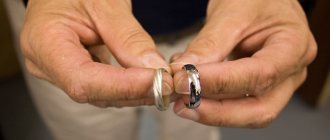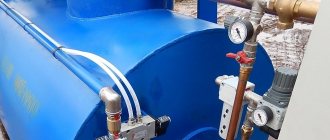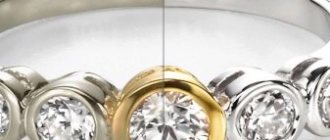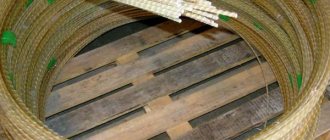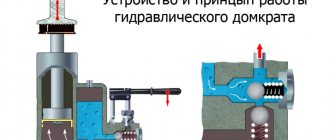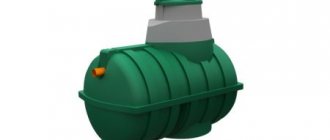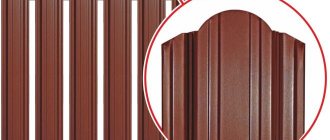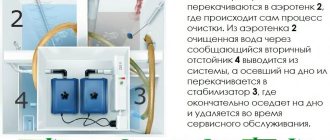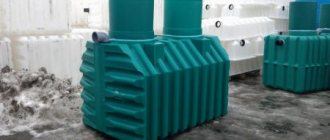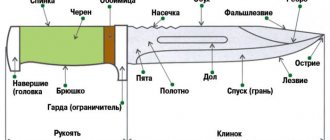I create earrings, brooches, pendants and other jewelry from clear epoxy jewelry resin. I've been doing this for 3 years now. I have two accounts on Instagram @anna.tulskaya and @frozen_rainbow_jewelry, more than ten thousand subscribers, hundreds of clients. I successfully go to exhibitions. A lot of jewelry resins have passed through my hands. After all, creativity is always searching, throwing, experimenting.
Unlike other posts, I won't be spraying light on every possible application of clear epoxy resins. Obviously, different requirements must be placed on resins for pouring “lenses” with a high dome and compositions for volumetric “rivers” in countertops, simulating water. I will consider the use of jewelry resin in only one area, the most popular in the handmade environment. This is the production of high-quality volumetric coatings on flat surfaces and small castings (up to 3 cm thick). Recently a publication by @ordinary_miracle1 appeared on the same topic regarding three brands of resins I researched, and I am pleased that our data practically coincides.
We analyzed 6 brands of jewelry resins, most of which appeared on the market relatively recently:
- PEO-510KE-20/0 from SPbGTI (TU), St. Petersburg
- Magic Crystal 3D from the Ukrainian company Elastoform, Kiev
- EpoxyCrystal PLUS from EPOXIMAX LLC, St. Petersburg
- Poly Glass from PolyMax (IP Goncharov M.A.), St. Petersburg
- D-line Crystal Epoxy from D-Line LLC, Ivanovo
- Artline Crystal Epoxy from Artline Creativity (IP Alekseev A.V.), Vladimir
We will compare according to the following criteria:
- ease of mixing and bubble penetration,
- reaction to a water bath, ease of degassing,
- degree of density, time of primary thickening, time of complete curing,
— optical transparency in balls and fluidity on flat castings, ease of grinding and polishing.
Differences in conductive compositions
The main difference between conductive adhesives and conventional ones is the presence of specialized components, thanks to which the material acquires the desired electrical conductivity.
In addition, other differences should be noted:
- relatively low strength;
- the presence of graphite and a metal base (sometimes a combination of these components is found);
- specificity of the scope of application (such adhesives are not suitable for other applications);
- high cost.
Famous brands
There are not many brands of conductive adhesive manufacturers on the market. Among them there are both Russian and foreign companies. Below we list the most proven brands of adhesives:
- Conductive adhesive grade Kontaktol on silver 2g is intended for creating highly elastic, durable surfaces. Produced on a silver base. It dries quickly, making it easy to use. You can purchase Kontaktol at any radio store or market. However, it should be noted that most reviews about this brand are negative.
- "Elekont" is a conductive composition based on epoxy resin, often used by car enthusiasts. Reviews about this product are also not always positive.
- Foreign-made “Done Deal” glue. “Done Deal” is highly durable and reliable. This brand has good reviews from professionals.
- Homakoll is a popular brand of conductive substance that has been on the market for a long time. Most often used as a conductive adhesive for linoleum by large manufacturers. Has antistatic properties.
- "Mastix" is an electrically conductive lubricant for repair work on the rear window of a car. Mastix is considered the best choice in its segment.
- TPK-E is a brand of glue from a Russian manufacturer. A special feature of the composition is the ability to maintain performance characteristics over a wide temperature range - from minus 190 to plus 200 degrees Celsius. Most often this brand is used in industrial settings.
Instructions for using epoxy glue
The gluing process consists of the following steps:
- Cleaning surfaces.
- Glue preparation.
- Gluing.
Glue preparation
The parts to be prepared are dipped into an acid bath and degreased with solvents. Squeeze out of the tube and mix with hardener in a ratio of 1:10. The composition of a plasticine-like consistency is kneaded until softened. It dries very quickly after mixing, so don't hesitate.
For good fixation, you need to properly dilute and mix the glue. The resulting adhesive joint is applied to one part, which is pressed against another and fixed for 8-10 minutes. You can speed up the process by using warm air.
Concrete adhesive
It is a waterproof composition of epoxy nature, which is used for cement screed, waterproofing and coupling of building floors, roofing felt, boards, stone, etc. It can be applied as carbon fiber and helps to remove or prevent fungus.
Metal adhesive
Used as a fixative or putty. It can be applied to any surface. You can dry faster at temperatures from 5 to 90 degrees. After hardening, the product is resistant to low temperatures. It is impossible to peel off the fastened parts after complete drying.
Bonding plastic
The composition contains certain additives, so it does not harm the plastic, but reliably bonds them together. The plastic dissolves, being fixed at the molecular level, which eliminates the possibility of parts breaking or cracks.
Temperature
Epoxy adhesive tolerates high melting temperatures (150-180 degrees) well without losing strength. Some species can withstand up to 400 degrees Celsius. For hardening, 20 to 23 degrees is enough.
Drying time
Complete polymerization of a small layer occurs within 24 hours. It is unacceptable to put the product into operation before 24 hours have passed. Small items that will not bear the load can be used after 12 hours.
Security measures
It is better to work with glue wearing gloves, thick clothing, and safety glasses. It is also recommended to use a respirator. The room must be well ventilated or provided with fresh ventilation. How to remove unhardened compound from skin? Just use soap and water.
Self-production
Conductive grease can not only be purchased ready-made, but also made with your own hands. However, before giving manufacturing instructions, it is necessary to answer a number of the most common questions among beginners:
- Is Moment glue capable of conducting electricity? No, none of the many variations of this adhesive are capable of conducting current.
- Is Superglue electrically conductive? To answer the question you need to understand the nature of conductivity. This type of substance does not contain components (metals, graphite) that conduct electricity. Thus, in terms of its capabilities, “Superglue” is almost identical to plastic.
- What about epoxy compounds? Epoxy resin does not transmit electricity for the reason stated above.
- Are high-voltage repairs using specialized glue allowed? No, such work is prohibited in accordance with safety regulations.
- I bought Kontaktol, but it does not give the desired effect. The reason is most likely that the product is counterfeit. The popularity of this brand has led to a large number of counterfeits.
- What is needed for the electrical conductivity of the composition? The adhesive must necessarily contain conductive components. Moreover, their specific gravity must be sufficient to ensure electrical conductivity.
Manufacturing instructions
This part of the article will talk about how to make conductive glue with your own hands. The desire to make the composition yourself is often dictated by the unsatisfactory quality of store purchases. In addition, sometimes an adhesive composition is needed urgently, and there is simply no time to find it on sale. In this case, you can make glue with your own hands according to the instructions below. To make it you will need:
- First of all, you need to prepare a base on which homemade conductive glue will be made. We will use a graphite pencil lead as such a base. This rod will become a conductive element.
- Stationery knife.
- Hammer.
- A piece of paper on which we will collect graphite dust.
- A glass or other container for graphite dust.
- Nail polish.
Before making conductive glue, you need to remove the graphite from the pencil. To do this we use a stationery knife. Next, place the rod on the paper, cover it on all sides so that dust does not scatter to the sides. Using a hammer, grind the graphite until it turns into dust.
We collect dust in a clean and dry container prepared in advance. Pour nail polish into a glass and stir the mixture with a wooden stick (you can use, for example, an unnecessary pencil). That's it - the conductive composition is ready.
other methods
Conductive gel or varnish can also be made from metal chips or dust. The fact is that graphite is carbon with a special crystal lattice. Carbon is found in combustion products, for example, in soot.
Silver can also be used as conductive elements, although the method is quite labor-intensive. First you need to purchase silver nitrate or regular nitric acid. You will also need 1% formalin solution and ammonia.
After combining silver with formaldehyde in equal parts and a few drops of ammonia, a characteristic black precipitate will appear - this is silver. The metal is extracted by filtration in distilled water. We dry the metal at high temperature - from 100 to 150 degrees above zero. The resulting powder will become the basis of the adhesive. To make the composition more liquid (then it will dry more slowly), the glue can be diluted with a small amount of alcohol.
There is another way to make conductive glue with your own hands. Silver powder can be obtained by evaporation: the process is carried out until crystals appear. Next, heat the substance at 400 degrees for 30 minutes. As a result, bubbles will appear, which will indicate the readiness of the substance. The method is considered very effective, but not readily available at home. In addition, certain skills in working with chemicals are required.
Features of self-production
There are a number of important points when obtaining adhesive compositions yourself:
- Wrong decisions are quite possible. The consequence of such errors can be damage to expensive equipment. Therefore, if you lack confidence in your own knowledge and skills, it is better to trust professional compositions from manufacturing companies.
- Conductive varnish made from nail polish, by definition, cannot be as durable as the factory compound.
- With a correctly set up workflow, the production of the composition will take no more than 3-5 minutes.
Thus, everyone decides for themselves whether to make glue themselves or simply buy it in a store, based on existing knowledge, financial resources, availability of goods at a particular moment and other considerations.
How to use epoxy glue correctly
Ceramic glue
When repairing ceramic products, epoxy will help hide the location of damage or breakage. You need to prepare the ceramic glue for use, and then pick up all the broken pieces. You need to remove the fatty film from them, and then lubricate the surface of the fracture and assemble the damaged ceramic product.
If it is necessary to repair glass products, they try to connect everything, even the smallest crumbs. Glass adhesives are produced transparent. Only colored glass can be properly glued. To do this, coloring pigments are added to the solution. They hide the fracture site.
Concrete adhesive
Adhesive for concrete
Special putties “Ceresit” are produced for concrete. This two-component mixture is quite widely used when performing repairs and finishing work. Finishers like the solution for the following reasons:
- after filling the seams, the volume does not change, shrinkage is practically invisible;
- a waterproof surface is obtained;
- can be used in a wide temperature range from -35...40 °C to +250...300 °C;
- it is easy to carry out additional sanding after the coating has cured;
- you can mix a large volume (up to several liters); the composition contains plasticizers that allow you to extend the period of use of the solution.
Metal cleaner
When gluing steel or aluminum elements, metal adhesive shows excellent joint quality. The main thing is to thoroughly degrease the surfaces that will be coated with glue.
Motorists often use epoxy glue for metal work. It can be used to perform quick repairs to get to a service station. Many people repair damage to fuel tanks this way. Then they forget for many years that they carried out repairs.
Even for body work, epoxy compositions help putty surfaces quite thoroughly. All that remains is to sand them and paint them.
Wood glue
Epoxy glue is often used for gluing wooden products. It produces strong bonds that are superior to other types of glue.
Bonding plastic
When gluing plastic products, the surfaces to be glued are treated with sandpaper to increase the roughness. Then they spread it with the working compound and squeeze it tightly. Clamps help here. With their help, you can develop more compression force in the gluing area.
Temperature
It has already been noted that epoxy compounds work reliably over a wide temperature range. Therefore, products that have been glued with epoxy glue can be used in the North and South. The strength will not be compromised everywhere.
Drying time
At a temperature of +20 °C, complete drying occurs within 24 hours. You can increase the drying speed by heating the gluing area or the area covered with epoxy glue. You can use a hairdryer here. It should be remembered that you cannot overheat. The glue may boil. Then you will have to remove it completely.
Consumption per 1m2
Up to 3 kg of glue is consumed per 1 square meter. If you dilute it in acetone, you can reduce the consumption to 250 g per 1 sq.m. True, you will have to wait a long time (up to three days) for complete polymerization.
Does epoxy conduct electricity, if not, how can I fix it?
Does epoxy resin conduct electricity or not?
If it doesn’t work, how can it be fixed?
If we are talking about “classic” epoxy, that is, it contains only epoxy resin and hardener without any fillers, then such epoxy does not conduct current (electricity).
Epoxy is essentially a dielectric (dielectrics are materials that do not conduct current).
The purpose of epoxy is different; the characteristics related to electrical conductivity are not the main ones; it is not a conductive adhesive.
That is, there is nothing special to correct; fillers are not used for correction, but to give the epoxy certain characteristics.
If the epoxy needs to conduct current, then you need to buy one like this
Next, pour the resin (epoxy) into a passing container, add aluminum powder in small portions and mix thoroughly with a spatula or wooden spatula.
All that remains is to add the hardener and mix again.
We select the proportions of powder in epoxy experimentally; after mixing, the epoxy should have the consistency of very thick sour cream.
I added the hardener at the end, approximate proportions per 10 parts of epoxy resin to one part of the hardener.
Keep in mind that after adding the hardener, the epoxy hardens quite quickly, that is, mix the required amount and add the hardener at the last stage.
Conductive glue does not have to be made from epoxy; there are cheaper options, such as nail polish and powdered pencil lead.
The lead is made of graphite; graphite conducts electricity well.
Source
Properties and scope
Epoxy resin based adhesive can be:
- one-component. There is a mixture of epoxy resin that is dissolved in an organic solvent. This mass has no color, it is transparent. It is used for connecting small parts, sealing plumbing fixtures when assembling and laying sewer and water supply networks. Most often, this adhesive is sold in small tubes or tubes. It is in demand in everyday life for handicrafts; it is often used by car enthusiasts to perform minor repairs. Can only be stored in an airtight condition;
- two-component glue is sold in the form of sets of two containers. The first (large) contains resin, and the second contains a hardener. Two-component epoxy adhesive is prepared by mixing resin and hardener in the required proportion. It is necessary to mix the mixture thoroughly, only then all the strength properties appear.
In practice, both types of glue are used. But the most common is a two-component composition. It's easier to store. Later, when using, it is enough to combine the ingredients to get a working composition.
How to use epoxy glue if necessary is written on the packaging. When the resin and hardener are mixed in the required proportions, the polymerization process begins. It is accompanied by heating of the mixture. Literally before our eyes it turns from a viscous mass into a solid substance.
Epoxy adhesive composition
Typically epoxy is pale yellow in color, sometimes even transparent white. But there are polymer variants that have thick yellow, orange and even reddish colors. Here, much depends on the ratio of the components of the source material.
Attention! In the process of preparing the working mixture, you need to remember that in a liquid state they are toxic. When connected, harmful gases are released. Therefore, you need to do the work in the presence of a hood or in the open air.
How can you connect cold electricity
The topic of cold electricity is inextricably linked with the name of the outstanding scientist Nikola Tesla, who gave the world alternating current.
Thanks to his invention, the entire modern industry of production and delivery of electricity operates. Safety rules when working with current were also first formulated by N. Tesla after numerous (not always successful and safe) experiments.
In addition to working with electricity, Tesla was engaged in radio communications and studying the Earth's magnetic field. According to his version, there is an invisible and intangible ether around us, from which we can obtain energy in unlimited quantities.
It is believed that the scientist made attempts to transmit electricity at a distance. According to legend, one of these attempts led to the explosion of the so-called Tunguska meteorite over Siberia. Tesla wanted to transmit a pulse of energy to the opposite side of the planet and was somewhat “overzealous.”
Unfortunately, numerous false scientists are trying to attach themselves to the scientific heritage of Nikola Tesla. If you start studying the topic of cold electricity, then most often information about this unusual effect will be found on the resources next to the diagrams of the next perpetual motion machines that you can assemble with your own hands.
Why is it not worth applying lithol to battery contacts?
The main reason why you should not use such lubricants on contacts is that they are all dielectrics. And lithol also does not conduct electricity. On the Internet you can find the results of experiments that clearly show that when contacts are lubricated with such a lubricant, the resistance increases by 30-35%. This is critical for some batteries, which, when power is redistributed from the starter to the processed contact, will burn out at the first start.
In principle, there is no need to lubricate the battery terminals with anything: before connecting them, just wipe and clean them. If it is necessary to protect contacts from oxides, then this is done after the metal-to-metal connection, and special compounds are used, for example, technical petroleum jelly.
Another common argument among craftsmen and participants in thematic forums is that lithol manufacturers do not directly indicate that the lubricant does not conduct electricity, and the composition is positioned as universal. But if you carefully read the instructions, you will see that Litol-24 is proposed to be used exclusively as an antifriction agent in friction units. Given the prevalence of the myth about the use of lithol as a conductive oil, some manufacturers separately began to indicate on the label that the lubricant does not conduct electricity and should not be used when connecting contacts. find out more about what technical characteristics Litol 24 has on our website.
If you still have questions regarding lithol and its scope of application, experts will be happy to answer them. We sell our own lubricants wholesale and retail and are ready to select the appropriate solution for lubricating the equipment of your enterprise.
Reaction to water bath, ease of degassing
After stirring, I always place the glass in a water bath, this makes it easier for the bubbles to escape.
PEO-510KE-20/0
Reacts well to a water bath. If there is no degasser, then by holding it in a water bath longer, you can achieve a good result in the release of bubbles. When degassed in a vacuum chamber, it boils moderately and degasses quickly and easily.
Magic Crystal 3D
The thickest of all samples. I stopped using this resin after the last few batches arrived cloudy. When heated on the battery, the turbidity disappeared, but apparently some production technology was violated, because the resin did not degass in the vacuum chamber even when preheated in a water bath. It was covered with a bunch of small bubbles and foam, but there was no result.
Epoxy Crystal PLUS
The resin is medium thick, I always have trouble filling it with bubbles. But after heating in a water bath in a vacuum chamber, everything comes out almost perfectly. It boils strongly, so the volume of the glass should be significantly larger than the volume of the resin.
Poly Glass
The resin is thicker than Epoxy Crystal PLUS, but thinner than Magic Crystal 3D. Degasses moderately, there are a lot of bubbles after the water bath. After the vacuum chamber, bubbles also remain.
D-line Crystal Epoxy
It was an interesting experience with this resin. Since it is very liquid, I simply heated it in a sauna once, and it became perfectly degassed. I put the second batch in the degasser. It degassed perfectly in 10 seconds. And the third time I first warmed it up, then put it in the chamber. And then there was a surprise. The resin got very hot, almost boiled, a bunch of tiny bubbles appeared in the thickness of the liquid and it immediately began to harden. An hour later it was already completely hardened. I've never encountered anything like this. I didn’t throw away the casting; as a result, the frozen sample was opalescent, with a milky whiteness. There was no talk of any transparency. I sent the result to the manufacturer. They said that perhaps I had applied double exposure to the sample. I didn’t take any more risks and didn’t take this resin. I don't need surprises.
Artline Crystal Epoxy
Despite the fact that, according to my suspicions, this resin is the twin resin of D-line Crystal Epoxy, it withstood the double action of “bath + degasser” and gave excellent results due to its original liquid.
Preface
Tell me what electricity is and I will explain everything else to you.
W. Thomson (Lord Kelvin)
These were not empty words of one of the fathers of classical physics; they contained a deep meaning of a hitherto unknown natural phenomenon. The importance of electricity for the economy of the entire planet cannot be overestimated. Just 100 years ago, we only used steam locomotives and horse-drawn vehicles - today there are electric trains and electric cars all around, even tomatoes are grown under electric light. All around is electricity. Can artificial light replace the light of the Sun? What do we know about the nature and structure of electricity? Nothing or almost nothing. Everything repeats itself, as with the history of electromagnetic waves. The application is all around, but nothing is known about the nature, structure and charge of the self-propelled energy of photons. The same goes for the atom, its nucleus and electrons. Electricity
was the greatest problem of fundamental physics of the 19th century, and became an even greater problem not only of physics of the 20th century, but also of the beginning of the 21st century.
As in the distant 40s of the last century, G. Kohler received the usual
electricity by the resonant interaction of the central gravitational field (gravitational ether) with the atomic-molecular matter of its magnetic generator, also E. Gray mastered the transformation of flashes of “ cold electricity”
» N. Tesla into
ordinary
electricity.
And in the reactor of Vachaev A.V., water atoms, ionized by the microball lightning of the plasmoid, also generated ordinary
electricity with the help of released electrons in the external circuit.
But the mechanism
of such transformations, which are different in nature, as well as the explanation of the main
difference between
these two types of electricity, is still
unknown
. There are also differences in the properties of cold electricity from ordinary electricity. All of these devices used activated oscillator generators, but different in nature - Kohler magnetic generators, Tesla electric transformer or Vachaev cold plasmoid. Some used gravitational fields, others used the electric fields of the atom, the latter used freed electrons.
The first definitions of electricity were given by B. Franklin, M. Faraday, D. Keeley and N. Tesla - its elements are the electron
and broadcast
.
The essence of the mechanism of birth of mass1, electric charge, spin, magnetic moment and structure of the electron
is structured high-frequency products from
the electric, magnetic
and
gravitational ether
, produced
by an invisible
pulsating magnetic monopole2 (gravitational monopole) with its
infinite
energy relative to this process and the age of our Universe.
From ordinary electric current, Tesla was able to separate
the electrical ether (a cluster of clouds of electricity from electrical potential grains) from the electrons and integrate it
distributed
along
the length
of his coil to obtain a very high electrical potential of up to 200,000 volts without current in static.
This cold ether
was captured and removed from the collective of atoms of a polarized cluster of matter (with the largest possible mass of atomic-molecular matter) using an applied high-voltage (2000 V) electric potential pulse with one steep front of the same sign.
He then formed it into a massless cloud of circular electricity
and manipulated it with his bare hands, like a balloon, transferring it from box to box, or like a liquid, pouring it into a bottle.
Tesla called this ball cold round electricity
.
He then demonstrated experimentally two different properties inherent in ordinary current from electrons
and cold current from
ether
- electrons prefer to go along
thick
copper wires with low resistance, and electric ether is able to transfer its
potential
3 over the surface
of thin
conductors with high resistance or even through a gap in chains. These effects are clearly demonstrated by a glowing light bulb with a burnt-out filament by N. V. Kosinov4
Thermal conductivity of materials based on epoxy compounds
This approach is completely justified: in construction, when the issue of energy saving has become acute in the last few decades, structural cladding materials based on epoxies with various fillers have a wide range in this indicator. If, for example, epoxy with quartz filling has a thermal conductivity coefficient of 0.30 W/m*K (this is how this indicator is designated), then pure hardened resin without any filling will have a numerical value of 0.59. This is comparable to the thermal conductivity of water, which has this indicator of 0.6, and there is no need to explain what an excellent coolant and heat exchanger water is.
Aircraft, shipbuilding, automotive industry
So, speaking about this indicator when calculating the thermal conductivity of a material, it makes sense to consider it only in connection with the fillers that are introduced into it, and they can be very different. In the same shipbuilding, when it comes to small vessels (yachts, boats, scooters), the fiberglass hull, which is formed from layers of fiberglass impregnated with epoxy, will be in constant contact with water, and heat transfer from it may be required alone., but composite materials with using fiberglass bases impregnated with epoxy resins, used in aircraft construction, will require completely different thermal conductivity parameters. Indeed, when moving at speeds close to the speed of sound (for civil airliners) and when this value exceeds 1 or even 2 MAX for military aircraft, heat transfer issues arise with particular urgency.
Useful to know > How to properly dilute epoxy glue, what proportions should be observed
The borderline position between these branches of transport is occupied by the automotive industry, where almost 100% of epoxy-based fiberglass takes part in the formation of bodies, especially for passenger cars. The contacts do not provide an effective coolant in the form of water, so other fillers and plasticizers will be used, with their own thermal conductivity coefficients.
Construction
In civil engineering, the matter is further complicated by safety issues. There, materials based on epoxy resins will require not only effective protection against heat loss, but also proper fire safety and harmlessness in terms of sanitary standards. Combining all these parameters in one material often seems to be a very difficult task.
In practice, it may look like this: the thermal conductivity coefficient of wood varies among different species from 0.4 to 0.04 W/m*K, the difference is severalfold. Therefore, wooden houses are much warmer than stone ones, whose value can be from 0.29 to 2.4 W/m*K. But wood is a fire hazard, even with the use of special impregnations. Stone is often expensive, and epoxy, even if bound with fillers, can release components hazardous to health when heated.
A polymer that does not emit anything is often very expensive and rarely used.
Instrumentation, electrical engineering
The rate of heat transfer, according to the law derived by Newton, is directly proportional to the temperature difference between the heated body and its environment.
This law also works perfectly in the case of arranging many fuel elements in one, and in a very limited space. As happens in microelectronics, where on boards formed from glass fabric (in turn, created using epoxy components) or in instrument making, when a limited volume of a metal case contains up to tens, or even hundreds, of such boards.
The solution is to increase the area of heat-emitting surfaces in the form of corrugated fractal radiators made of copper combined with epoxy with its thermal conductivity coefficient of 401 W/m*K (compare with the same parameter for epoxy - 0.59) or aluminum (pure), with its coefficient equal 237 W/m*K (120-180 for various alloys). An additional way to remove heat from electronic devices that heat up during operation is the use of such radiators and coolers-fans, or, as is practiced in the defense industry, even liquid radiators for cooling such electronic devices. We are talking, of course, about stationary computers or payment centers.
Useful to know > How to make mosaic tiles from epoxy resin with your own hands
Is it possible to put food on resin products?
Unfortunately, not all epoxy resins can boast of allowing such contact. At the moment, only one of our resins is certified for safe contact with food (but only cold!) products - Art Pro 2.0 . We strongly discourage placing food on plates, cheeseboards and trays made from our other resins.
- -15% Out of stock
Medium-thick epoxy resin for painting “Art-Pro 2.0” 3.32 kg
4660 rub. 3965 rub. More details
- Medium-thick epoxy resin for painting “Art-Pro 2.0” 830 g
Rating 5.00 out of 5
1230 rub. Add to cart
- Medium-thick epoxy resin for painting “Art-Pro 2.0” 1.66 kg
Rating 5.00 out of 5
2370 rub. Add to cart
- Medium density epoxy resin for painting “Art-Pro 2.0” 332 g
710 rub. Add to cart
Serving board with epoxy resin from @alexamari_art
Epoxy resin serving board by @alexamari_art
Is ebonite a conductor or a dielectric?
As you know, all materials are divided into conductors, semiconductors and dielectrics. Moreover, such a division is quite conditional, since the possibility of electrical flow in bodies depends not only on the type of substance, but also on environmental conditions, state of aggregation, the presence of impurities and many other factors.
Therefore, most often the division of substances into conductors and dielectrics is usually carried out according to the value of electrical resistivity:
- For conductors this value is ρ
- For dielectrics – ρ > 108 Ohm m.
Semiconductors occupy a middle position between these two classes and have a specific electrical resistance of 10−5 - 108 Ohm m. However, such a division does not allow one to accurately determine whether a material conducts electric current under given conditions or not.
Understand whether a substance is a conductor by studying its physical properties and behavior in an electric field. Therefore, to determine whether ebonite conducts electric current or not , consider the physical properties of ebonite, as well as its behavior in an electrostatic field.
What is the thermal conductivity and electrical conductivity of epoxy resin
The wide use of epoxy resins in everyday life, industry, aircraft and shipbuilding, electrical engineering and electronics, and construction has prompted a detailed study of such parameters of epoxy resins as their thermal conductivity and electrical conductivity coefficients.
There is a program for calculating the uncertainty of verifications in accordance with GOST 8.461-2009, certified by the Federal State Unitary Enterprise named after. Mendeleev, on the basis of which the parameters of materials used in a particular industry are selected.
What kind of glue conducts electricity?
By Max
Last updated
Jan 8, 2021
Conductive varnish, glue and other compounds are popular today among electrical professionals. They are used by radio amateurs when assembling microcircuits, in the computer industry, in the production of high-precision equipment, shipbuilding and in other industries.
The difference between conductive glue and regular glue
The main difference is that the composition of conductive adhesive requires the presence of certain components that provide the required level of electrical conductivity.
Among the differences we can also highlight:
- lower strength indicators than conventional ones;
- the composition usually contains graphite, metal or both components in a complex;
- the scope of application has its own specifics;
- the cost of such compositions is slightly higher.
Conductive adhesive selection
There are several manufacturers of conductive adhesive, both foreign and domestic, that guarantee high electrical conductivity.
- Contact. Probably the most famous composition among radio amateurs. Conductive adhesive contactol has high elasticity, sufficient strength, is made on a silver basis and dries quickly, which ensures quick and convenient installation. You can buy conductive glue of this brand in any amateur radio store, however, the professionals in this field themselves speak rather poorly about it. But there are also positive reviews.
- Elekont. Conductive adhesive that will be useful to every car owner. This is an epoxy compound. Reviews about it are also not encouraging.
- Done deal. This is a foreign representative of this type of glue. Conductive adhesive done deal has increased reliability and strength, which makes it better than domestic analogues.
- Homakoll. A fairly popular brand of conductive adhesive that has long established itself in the market. It is used by large companies as an electrically conductive adhesive for floor coverings with an antistatic effect.
- Mastix. This company introduces an electrically conductive adhesive for repairing heated rear windows. Mastix conductive adhesive is considered one of the best in this segment.
- TPK-E. The brand is distinguished by its technical characteristics. This adhesive will function in a wide range of temperatures. From -190 to +200°C. Used in enterprises.
Types and characteristics of glue
For practical use, several easy-to-use modifications are produced. There are no special differences between ED-5, ED-6, ED-20 and EDP. By agreement back in the USSR, different designations were introduced in order to know the manufacturer. Currently, there are only two types on the Russian market: ED-20 and EDP. Everything else is just variations of the original samples.
Common brands
Glue Moment
The industry also produces special types that are used in very special areas. The characteristics of the glue depend on the purpose and form of release.
- Many people know the epoxy-based Moment glue. It is sold in tubes of 50 g. Bonding occurs within a few minutes, the strength is high. In this way glass is glued to metal.
- “Contact” mass is sold in the form of plasticine. It is used to repair and connect pipes and plumbing products. You can glue small shelves, for example, in the bathroom. The drying time of the epoxy glue in this plasticine is 2...4 minutes. Adhesive Cold welding
- “Cold welding” is an adhesive designed to join metal fragments. The strength of such a connection is at the level of welding. Used in the repair of aluminum parts that really cannot be welded. Fast-drying, effective adhesive.
- EDP is the most widely used. It is always present among car enthusiasts. Helps in solving any problems that may arise along the way. Glue Epoxylin
DIY conductive glue
Many novice radio amateurs are wondering how to make conductive glue with their own hands. Here it is necessary to clarify some questions that beginners ask most often.
- Does glue conduct current? This is an adhesive that was developed and introduced by the German company Henkel. A total of 6 compounds were created for various purposes, but none of them conduct current.
- Does super glue conduct electricity? To answer this question, it is necessary to turn to the very concept of an electrically conductive material. Super glue does not contain components that would allow it to be called electrically conductive (graphite, metals), so its performance in this regard is practically no different from plastic.
- Does epoxy conduct electricity? Epoxy resin does not conduct electricity due to the above reason.
- Is it possible to repair high voltage wires using this glue? Masters do not recommend doing this, as it goes against safety rules when working with electricity.
- Why doesn't the contactor work? In modern times, a lot of fakes of this glue have appeared, so it is better to purchase this glue with guarantees from the manufacturer.
- What glue conducts electricity? Any adhesive that contains electrically conductive components in sufficient quantities.
Manufacturing instructions
Recently, radio amateurs have spoken unflatteringly about modern manufacturers of conductive glue. Perhaps it’s all about fakes or the manufacturers themselves provide low-quality goods. In addition, conductive adhesive for microcircuits and other equipment is sometimes needed urgently, and there is no time to purchase or order it. In this case, you can make such a composition yourself using our instructions.
How to make conductive glue? First you need to stock up on the necessary set of materials. He is quite modest:
- a graphite rod from a construction or simple pencil, which will act as the main conductive element in the resulting composition;
- stationery knife;
- a sheet of paper to collect graphite dust;
- hammer;
- container for collecting graphite dust;
- nail polish.
First you need to get a graphite rod. Using a utility knife, grind down the wooden part of the pencil until the graphite lead can be removed. After this, place the rod on a sheet of paper, close it so that the dust does not fly away and use a hammer to grind the lead to dust. This dust will become a conductive element. Collect the dust in a container (an ordinary cap from a plastic bottle is perfect for this). Pour nail polish into the container and mix thoroughly with graphite dust using wooden sticks that may have remained after processing the pencil. Now the conductive glue is ready! The convenience of this glue is that you have the right to make mistakes. Nail polish is easily removed using a special composition.
It should be noted that graphite is not the only material on the basis of which conductive adhesive can be made.
People also know compositions that are based on metal chips or dust. You can use your imagination and remember the school course in chemistry and physics, where they talked about conductive materials. Let's give an example. Graphite is essentially carbon with a characteristic crystal lattice. Carbon is also contained in the products of wood combustion - in soot. For this reason, conductive carbon black adhesive is also quite popular among radio amateurs.
Features of homemade glue
- No one is immune from mistakes. When you do something yourself, you run the risk of doing something wrong, which could result in damaging expensive equipment. Therefore, in some cases it is better to entrust it to professionals and spend money on purchasing a branded composition.
- The reliability of nail polish-based glue is not as high as that of store-bought glue. Remember that such varnish will not serve you forever and early, and its durability will end quite soon.
- Nail polish takes quite a long time to dry compared to store-bought counterparts.
- Homemade conductive glue is much cheaper to make.
- The manufacturing process takes less than 3 minutes, which does not significantly slow down the workflow.
All these facts suggest that it is best to purchase branded conductive glue once and use it for a long time, rather than making your own composition each time, which will quickly fail.
Conductive adhesive is an excellent tool for those who need to quickly and efficiently repair electrical equipment. And only you can decide whether to make glue yourself or buy a reputable brand.
Source
Not all resins are the same
In fact, there are thousands of different epoxy resin formulations, differing in the components that make up the polymers. Some resins can be extremely toxic , while others are practically harmless . The latter can cause irritation with prolonged contact with the skin, like many chemical products that we use in everyday life (for example, washing powders or detergents).
However, you should always be careful when working with epoxy resins (even if they are completely harmless) and use the manufacturer’s recommendations, while using common sense, because it is not always possible to predict the body’s reaction to contact with epoxy resin (especially if a person is prone to allergies to “ chemistry").
